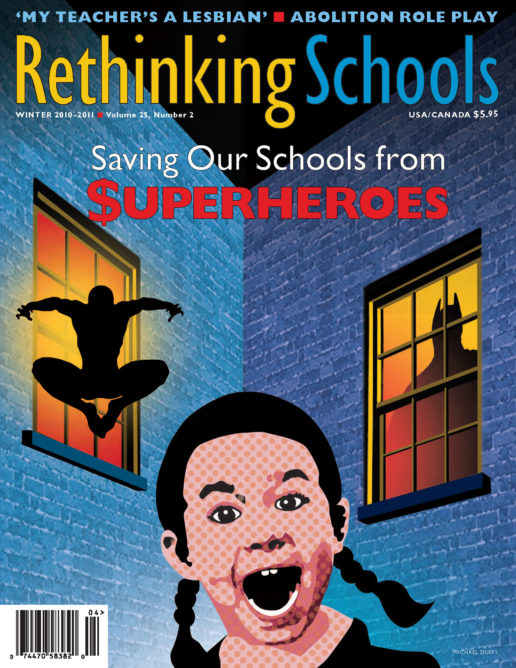Preview of Article:
The History All Around Us
Illustrator: Southern California Library for Social Studies and Research
A text can be anything: a poem, a map, an old letter. To spur great learning, it needs to be provocative, powerful, open to multiple interpretations, and, above all, it needs to teach something profound. I use one of the greatest texts imaginable—Theodore Roosevelt High School in East Los Angeles.
Roosevelt High was constructed in 1923 in Boyle Heights. Like the neighborhood itself, Roosevelt has grown. Originally built to house up to 800 students, it is now home to more than 5,000 students. The original building sat on less than three acres of land but now engulfs more than 10. When I arrived in 1994, 21 years old and full of nervous excitement, I was amazed at the sheer size of it and intrigued by its many hidden corners. I remember wondering about the school’s ghost stories. Were they true or just urban myths? I always thought that there was a good assignment in there somewhere, but it took years to come to me.
As part of the school’s 75th anniversary celebration in 1998, glass cases were erected with paraphernalia from each of Roosevelt’s decades—prom photos, 1920s-style football helmets, old faculty photos. One year my students and I were talking about the political message of monuments and I thought about those cases.
“A monument can be anything from a statue, to a painting, to a park or project named for someone,” I told the students. “You know the display cases up front, near the main office?”
Dead silence.
“You know, the glass cases with the old stuff? Have you looked at them?”
“Well, I’ve looked at them, but not looked at them, you know what I mean, Mister?” Martin asked with a sly smile. I did know what he meant.
“Field trip!” I announced. “On your feet and follow me!”
I took my students to the glass cases, pointing out the photographs and memorabilia, reminding them that all of these were monuments and asked them to think about not only what was there but also what wasn’t, who chose to display these things, and why. During the impromptu tour a student found her mother in a photograph: “I didn’t know she was on the drill team. She never told me!” Another student found a photograph of Coach Burgueno, popular math teacher and winning basketball coach, as a student.

